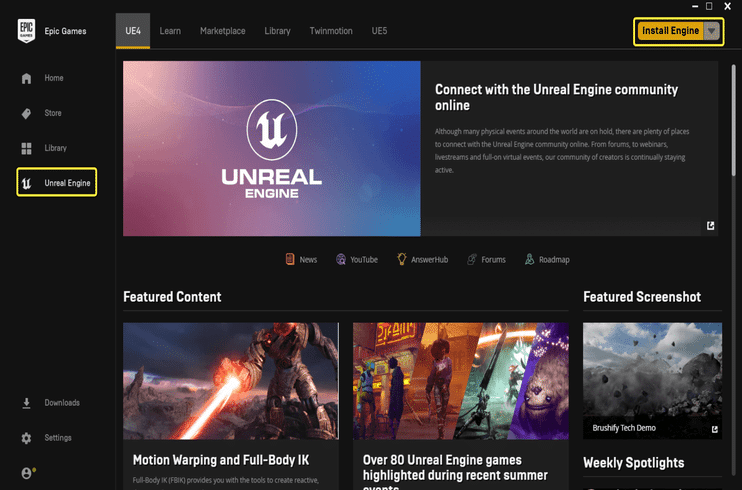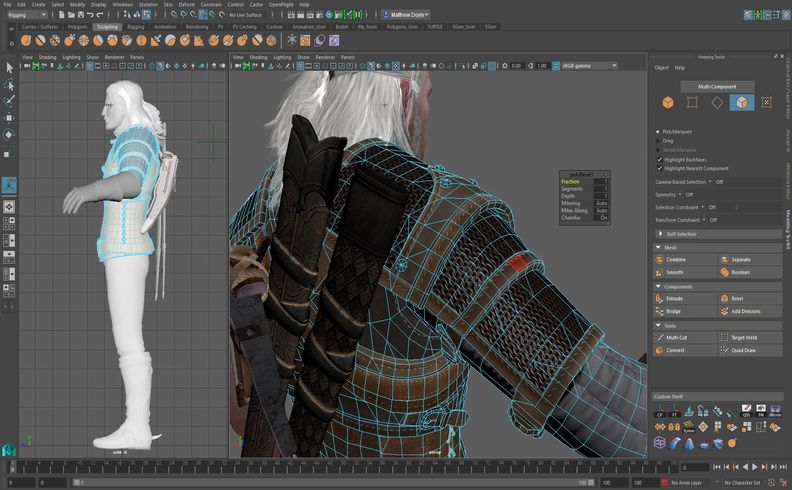The Metaverse: Top 10 Tools for Development
The Metaverse, a virtual world where people can interact with each other and engage in activities like gaming, socializing, and business, is growing at an incredible pace.
As the Metaverse becomes increasingly important, the demand for tools to develop it is also growing. In this article, we will explore the top 10 tools for Metaverse development, to help you create an immersive, interactive world that users will love.
The Metaverse is not just a fantasy anymore. With advances in virtual and augmented reality, the Metaverse is becoming a reality.
Companies, developers, and entrepreneurs are working to create a virtual world where people can interact with each other and engage in activities like gaming, socializing, and business.
As the Metaverse continues to grow with some metaverse real cases in 2023, the demand for tools to develop it will also increase. With the right tools, developers can create an immersive, interactive world that users will love. In this article, we will explore the top 10 tools for Metaverse development.
Top 10 Tools for Metaverse Development
- Unity
- Unreal Engine
- Godot Engine
- CryEngine
- Havok Physics
- Blender
- Maya
- 3ds Max
- Autodesk VRED
- OpenVR
1. Unity
Unity is a leading tool for metaverse development, providing a complete suite of tools for building interactive, 3D virtual environments. It offers a powerful and flexible engine for creating games, simulations, and interactive experiences, as well as a range of customization options for creating unique virtual worlds.
Unity’s intuitive editor and large community of developers also make it easy for teams to collaborate and share assets and ideas, making it a popular choice for metaverse development projects. Whether you’re a seasoned game developer or new to virtual world creation, Unity provides the tools and resources you need to bring your vision to life.
2. Unreal Engine
Unreal Engine is a powerful and widely-used tool for developing virtual and augmented reality experiences, and has become a popular choice for building metaverse platforms.
It offers a comprehensive suite of tools for creating 3D environments, characters, and animations, as well as a range of networking and multiplayer features for supporting real-time interactivity.
Additionally, Unreal Engine’s Blueprint visual scripting system makes it accessible to a wide range of developers, even those without programming experience.
With its high performance, ease of use, and vast community of users and developers, Unreal Engine is an excellent choice for anyone looking to build immersive and interactive experiences in the metaverse.

3. Godot Engine
Godot Engine is a popular open-source game engine for developing games and virtual reality experiences. It’s known for its user-friendly interface, multi-platform support, and ease of use.
The engine supports both 2D and 3D game development and offers a wide range of built-in tools, including a visual editor, scripting API, physics engine, and animation tools.
The engine is also highly customizable, allowing developers to easily extend its functionality to suit their specific needs. This makes Godot Engine a great choice for developers looking to create games and experiences for the metaverse.
4. CryEngine
CryEngine is a powerful game engine used for developing 3D games, VR experiences, and interactive environments. It offers a range of tools for creating stunning visuals, realistic physics, and immersive audio.
The engine also includes an integrated sandbox editor, allowing developers to easily create, manipulate, and test their virtual world in real-time. CryEngine also supports various platforms, including PC, Xbox One, and PlayStation 4.
With its advanced features, CryEngine is a popular choice for creating games with complex environments and interactive gameplay. Additionally, its large community of developers provides a wealth of resources, making it easier for developers to learn and create with the engine.
5. Havok Physics
Havok Physics is a powerful tool used in metaverse development for creating realistic physics simulations. This software is widely used in the game development industry and has proven to be a reliable and accurate tool for simulating the physical behavior of objects in virtual environments.
Havok Physics offers a range of features including rigid body dynamics, collision detection, and character animation. With its intuitive interface and performance optimizations, Havok Physics can be easily integrated into metaverse development projects and help bring more immersion to virtual experiences.
Its ability to simulate real-world physics helps create more believable and dynamic virtual environments, making it an essential tool for metaverse developers.
6. Blender
Blender is a free, open-source 3D creation software that is widely used in the metaverse development community. It is a powerful tool that allows users to create, model, and animate 3D objects and scenes.
Blender has a large user community and an extensive library of tutorials and resources that make it accessible to beginners and professionals alike. With its versatile interface, Blender can be used for a wide range of applications, from creating game assets and architectural visualizations to creating animations and VFX.
Whether you’re looking to build virtual worlds for the metaverse, or simply looking for a robust tool for your 3D projects, Blender is definitely worth considering.
7. Maya
Autodesk Maya is a 3D computer graphics software widely used in the creation of animated films, video games, and virtual reality (VR) experiences.
It offers an extensive suite of tools for modeling, animation, simulation, texturing, and rendering, making it a powerful tool for metaverse development. With its intuitive interface and customizable features, Maya is a popular choice for game developers and VR creators looking to build immersive virtual environments and characters.
Whether you are a beginner or an experienced artist, Maya can help you bring your creative vision to life in the metaverse.
8. 3ds Max
3ds Max is a professional 3D computer graphics program for creating 3D models, animations, and visual effects. It is widely used in the gaming and film industries, as well as for architecture and product design.
3ds Max offers a wide range of tools for metaverse development, including modeling, texturing, rigging, animation, and simulation. Its powerful scripting capabilities allow for the creation of custom tools and workflows.
With its robust feature set and active community of users and developers, 3ds Max is a popular choice for building immersive and interactive metaverse experiences.
9. Autodesk VRED
Autodesk VRED is a professional-grade virtual reality tool for metaverse development. It allows developers and designers to create highly detailed 3D environments and interactive experiences with photorealistic rendering.
VRED offers a range of tools for building, lighting, animating, and testing virtual reality scenes, making it a popular choice for creating immersive experiences in the gaming, automotive, and architecture industries.
With support for real-time visualization and VR hardware, VRED provides a seamless workflow for designing, iterating, and presenting virtual worlds to stakeholders.
Whether creating a product visualization or a complex virtual reality environment, Autodesk VRED offers the versatility and power needed for metaverse development.

10. OpenVR
OpenVR is a software development kit (SDK) and application programming interface (API) for the development of virtual reality (VR) applications, specifically for VR head-mounted displays (HMDs).
It was developed by Valve Corporation and supports the HTC Vive and Oculus Rift VR systems. OpenVR offers developers access to a range of features, including tracking of VR controllers, low-level access to VR hardware, and support for multiple VR devices.
It is a cross-platform API that works on Windows, Linux, and macOS, making it an accessible and flexible tool for VR developers looking to create immersive experiences for users.
| Metaverse Tool | Cost | Main Feature |
|---|---|---|
| Unity | Free to $125/m | Cross-platform support, VR/AR development |
| Unreal Engine | Free to 5% | High-end graphics, VR/AR development |
| Godot Engine | Free | 2D and 3D game development |
| CryEngine | Free to 5% | High-end graphics, VR/AR development |
| Havok Physics | Contact Sales | Realistic physics simulation, animation |
| Blender | Free | 3D modeling, animation, rendering |
| Maya | $1,545/yr | 3D animation, modeling, simulation, rendering |
| 3ds Max | $1,620/yr | 3D modeling, animation, rendering |
| Autodesk VRED | $2,840/yr | 3D visualization, real-time rendering |
| OpenVR | Free | VR development, integration with SteamVR/OpenXR |
Note: The costs listed for each tool are current as of the knowledge cutoff date and may have changed since then. Also, it’s worth noting that some of these tools are more specifically geared toward game development rather than the creation of a metaverse, but they can still be used to create content for the metaverse.
Conclusion
In conclusion, the Metaverse with new metaverse trends in 2023 is a rapidly growing field that holds immense potential for innovation and creativity. The tools mentioned in this list are just a few of the many options available for developers who are looking to create their own immersive and interactive experiences.
Whether you are a beginner or an experienced developer, the Metaverse provides a vast array of opportunities to unleash your imagination and build the future of digital experience.
Therefore, I encourage you to dive into this exciting field and start exploring the many tools and platforms available. With the right combination of skills, creativity, and technology, you can bring your vision to life and contribute to the growing Metaverse community.
So, don’t wait any longer, grab your computer, pick a tool and start building your own Metaverse today!
source https://www.coinideology.com/metaverse-tools-for-development?utm_source=rss&utm_medium=rss&utm_campaign=metaverse-tools-for-development
Comments
Post a Comment